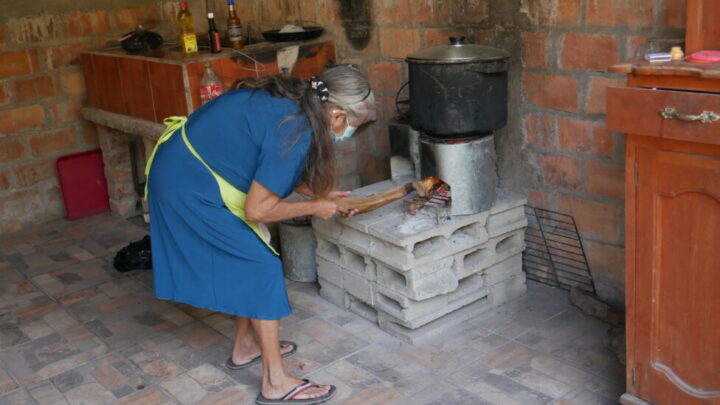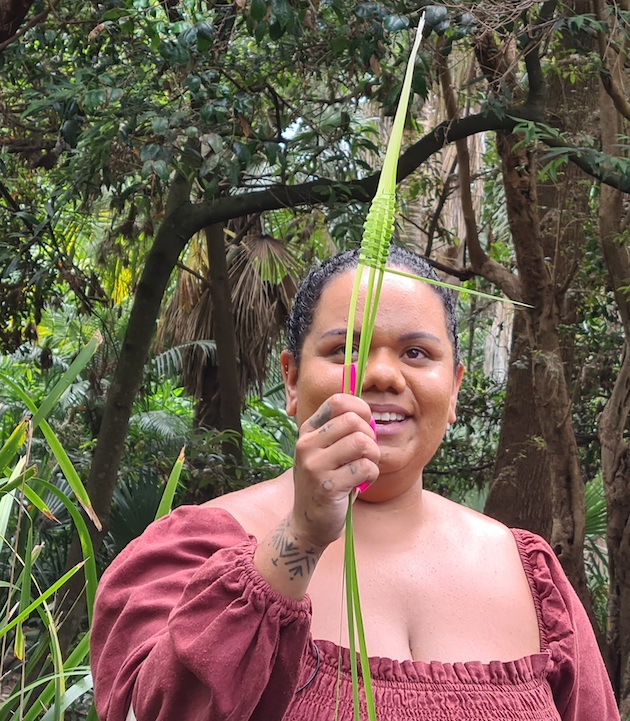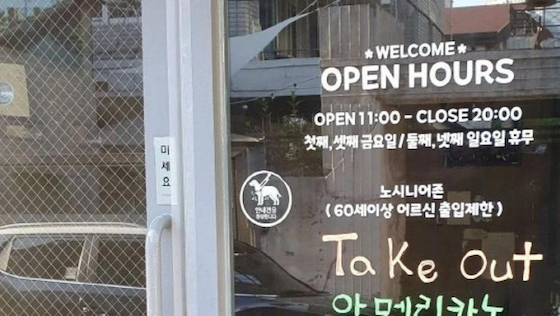Wood Smoke Continues to Make Women Sick in El Salvador — Global Issues
SAN LUIS LA HERRADURA, El Salvador, Jul 04 (IPS) – Using a few dry sticks as fuel, Margarita Ramos of El Salvador lit the fire in her wood stove and set about frying two fish, occasionally fanning the flame, aware that the smoke she inhaled could affect her health.
“I know that the smoke can damage my lungs, because that’s what I’ve heard on the news, but what can I do?” Ramos told IPS, standing next to her stove in the courtyard of her home in El Zapote, a village of 51 families in the coastal municipality of San Luis La Herradura, in the southern Salvadoran department of La Paz.
Firewood, the fuel of the poor
“I cook with firewood out of necessity, because I don’t always have a job or money to buy gas,” added Ramos, 44, referring to liquefied gas, a petroleum derivative used for cooking in 90.6 percent of Salvadoran homes, according to official data.
This is the situation faced by many women in El Salvador and other parts of the world, especially in the countryside, where dire economic conditions as well as ingrained habits and traditions lead families to cook with firewood, with negative repercussions on their health.
The World Health Organization (WHO) estimated that in 2019 approximately 18 percent of global deaths were due to chronic obstructive pulmonary disease and 23 percent to acute respiratory infections.
Ambient pollution, including wood smoke, plays a decisive role in respiratory diseases, especially among rural women, who do the cooking in line with the roles of patriarchal culture.
Back in 2004 the WHO warned that about 1.6 million people were dying annually from charcoal and wood smoke used in cooking stoves in many developing countries.
In El Salvador, 29,365 cases of acute respiratory infections per 100,000 inhabitants were reported in 2022, well above the 19,000 reported in 2021. Pneumonia reached 365 cases per 100,000 inhabitants in the same period, and the case fatality rate stood at 13.6 percent, up from 11.4 percent the previous year.

Ramos showed IPS the gas stove she has inside her house, with a cylinder that lasts approximately 40 days.
But when the gas runs out and she can’t afford to refill the cylinder, she has to cook with her wood stove. In her courtyard she has a table in a makeshift shed, where she keeps the wood and a metal structure that holds her pots and pans.
Official figures indicate that 5.9 percent of households in this Central American country use firewood for cooking.
However, in rural areas the proportion rises to 12.9 percent, while 84.4 percent cook with gas and the rest use electricity and other systems.
Ramos, 44, has no steady job and as a single mother, scrambles to provide for the needs of her two children.
Twice a week she cleans upscale apartments at a resort near her home, in Los Blancos, a well-known beach on El Salvador’s Pacific coast, also in La Paz. When she does well she cleans two a day, earning 24 dollars.
Sometimes she also washes other families’ clothes.
“Right now I have run out of gas, I have to use firewood,” she said. A cylinder of liquefied gas costs between 12 and 14 dollars.
She generally collects firewood on the banks of the estuary, from the branches of mangrove trees, since hers and other poor families live in a shantytown located between the Pacific Ocean and the Jaltepeque estuary, one of the country’s main wetlands.
Poverty affects 26.6 percent of the population at the national level in this small Central American country of 6.7 million inhabitants, according to official figures. But in rural areas the proportion rises to 29.6 percent, and of these, 10.8 percent live in extreme poverty.

Cutting costs with firewood
Meanwhile in San Salvador, the country’s capital, Cecilia Menjívar runs her small tortilla-making business partly by using firewood, which she collects from tree branches around the Los Héroes community where she lives.
She also uses wood left over from construction sites and sometimes buys it as well, at a cost of one dollar for about three “rajas” or axe-cut tree branches.
Tortillas are round flat bread made from corn dough, which are baked on metal plates generally heated with the flame from liquefied gas.
But Menjívar does not use gas to cook the 68 kg of corn she uses daily to run her business, as she can’t afford it.
“That’s why we prefer firewood. We don’t like it, first of all because of the damage to our health, and also because our clothes are impregnated with the smell of smoke and the walls of the house too, they look dirty,” Menjívar, 58, told IPS.
“We do it to save on the cost, which would be very high, and we wouldn’t make any profit,” she added, while behind her the 68 kg of corn for the day rattled in a boiling pot, black from the wood smoke.
Tortillas are part of the staple diet of the Salvadoran population. Most households cook their food on gas stoves, but they don’t make their own tortillas, because it is a complex and time-consuming process.
That is why so many women, like Menjívar, go into the tortilla business to meet the high level of demand, cooking the corn on wood stoves, usually located in the open air in their courtyards.
But during the May to November rainy season, they cook the corn inside the house, in a back room.
Because of the amount of corn and the size of the pot, the improvised wood stove made of wood and a metal structure has to be set on the floor.
The tortilla business has shrunk, she added, due to the increase in the cost of corn, which climbed from 15 dollars per quintal (45 kg) to 32 dollars.
“With this business we earn enough to buy our food and other basic things, but not for other expenses,” she said.

Chronic bronchitis and pneumonia
Menjívar said that she fell ill with pneumonia in 2022, and she did not rule out that the cause could have been precisely the smoke she has been inhaling for decades, although she pointed out that the doctors who treated her did not inquire about it.
“Since I was a little girl I have been exposed to smoke, because my mother also used to make tortillas using firewood,” she said. “When she couldn’t find dry branches, my mom would burn anything: old shoes, old clothes or paper.”
When she got pneumonia, she had to stop working for three months, and she had to leave the business in the hands of her teenage daughter.
Burning firewood releases toxic gases and polluting particles that end up causing ailments that in medical terminology are grouped together as chronic obstructive pulmonary disease, pulmonologist Carmen Elena Choto told IPS. These gases include carbon monoxide and nitrogen dioxide.
“We also see other harmful particles, there may even be hydrocarbons, because they not only burn wood, but also dry cow dung, corncobs, paper, anything to make the fire,” said the expert.
Damage to the bronchi, or chronic bronchitis, and to the alveoli in the lungs, or pulmonary emphysema, are some of the diseases associated with exposure to smoke, including tobacco smoke, she added.
“Due to the burning of biomass (firewood and other products), the most frequent disease is chronic bronchitis,” said Choto, and older women are the main victims.
People with bronchitis have a constant cough “or wheezing or shortness of breath because there is obstruction due to mucus plugs in the airway,” she said.
Patients, she added, feel tired and suffer from dyspnea or shortness of breath from low oxygen levels, which in severe cases requires hospital care.
Menjívar began to feel these symptoms after spending years making tortillas.
“I felt very tired, I suffered from hot flashes, I was short of breath, I felt like I was having a hard time breathing,” she said.
After she was diagnosed with pneumonia, Menjívar stopped working for three months.
“That’s why I try to stay farther away from the smoke now,” she said. “But the smoke spreads through the house.”
For her part, Ramos, in her coastal village, has put her stove in the yard outdoors, to reduce exposure to smoke. She worries that she could suffer from asthma, like her sister.

Eco-stoves, an alternative
One possible answer to reduce exposure to smoke, especially in rural areas, is the spread of eco-stoves, which due to their combustion mechanism are more efficient in producing energy and release less smoke.
These stoves have been around for decades in developing countries, including El Salvador, but they have not yet become widespread enough to make a difference, at least in this country.
There are socio-cultural aspects that hinder the expansion of the stoves and lead to the continued use of wood-burning stoves, environmentalist Ricardo Navarro, of the Salvadoran Center for Appropriate Technology, a local affiliate of the international organization Friends of the Earth, told IPS.
For example, he mentioned the practice by small farmers of placing corn or beans on bamboo or wooden platforms on top of wood stoves, so that the smoke prevents insects from eating the food.
“The problem is that sometimes we approach the issue as an energy or health problem, without considering these socio-cultural aspects,” Navarro said.
© Inter Press Service (2023) — All Rights ReservedOriginal source: Inter Press Service
Check out our Latest News and Follow us at Facebook
Original Source







